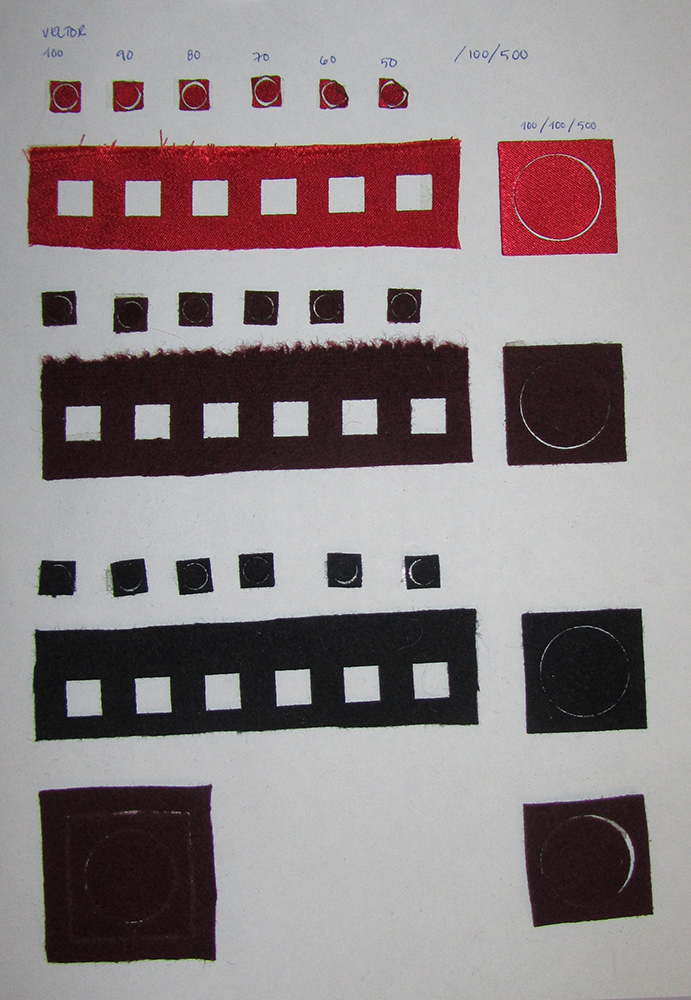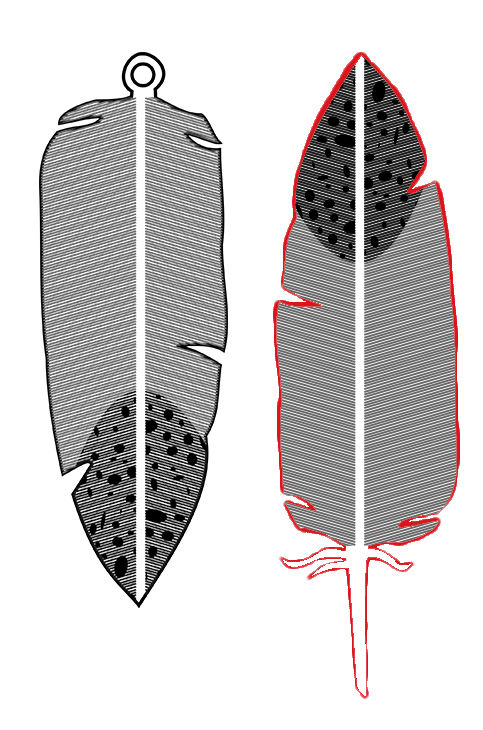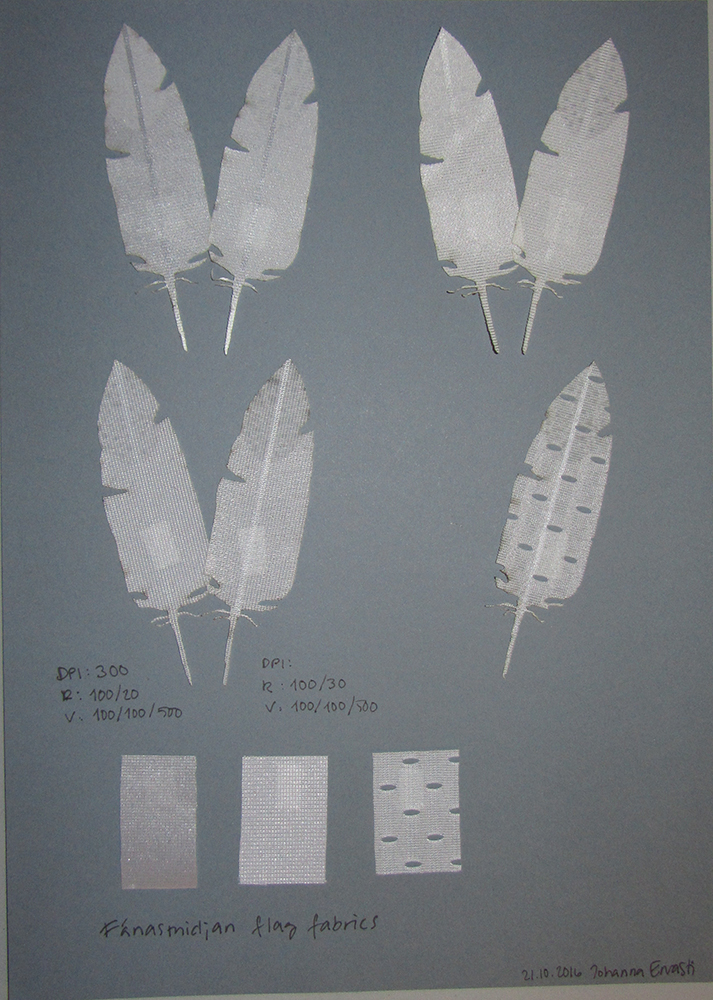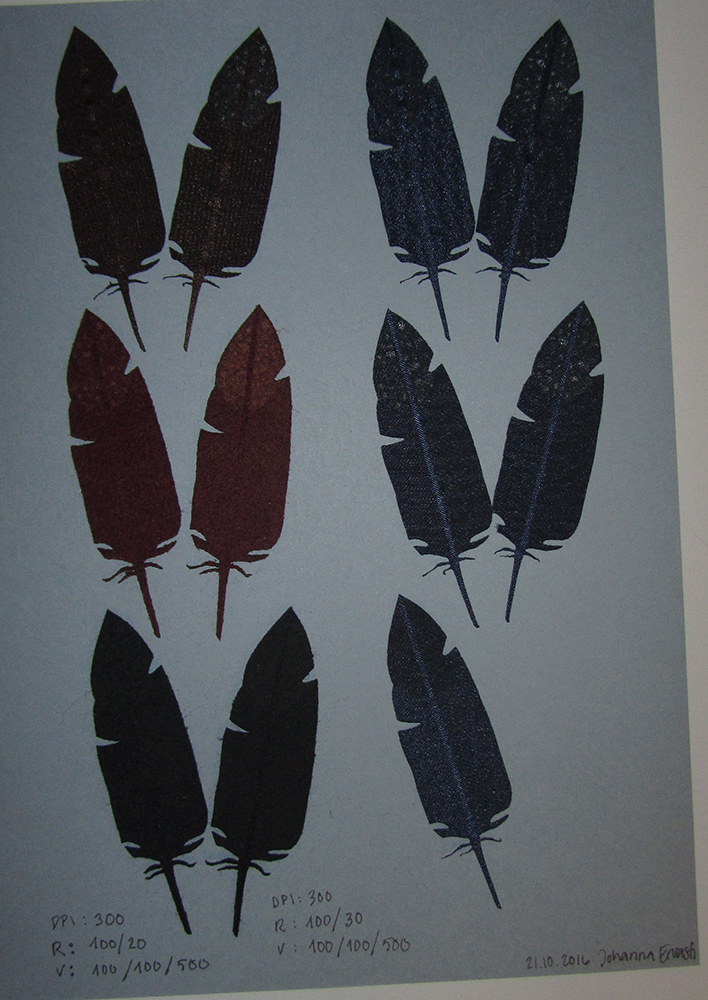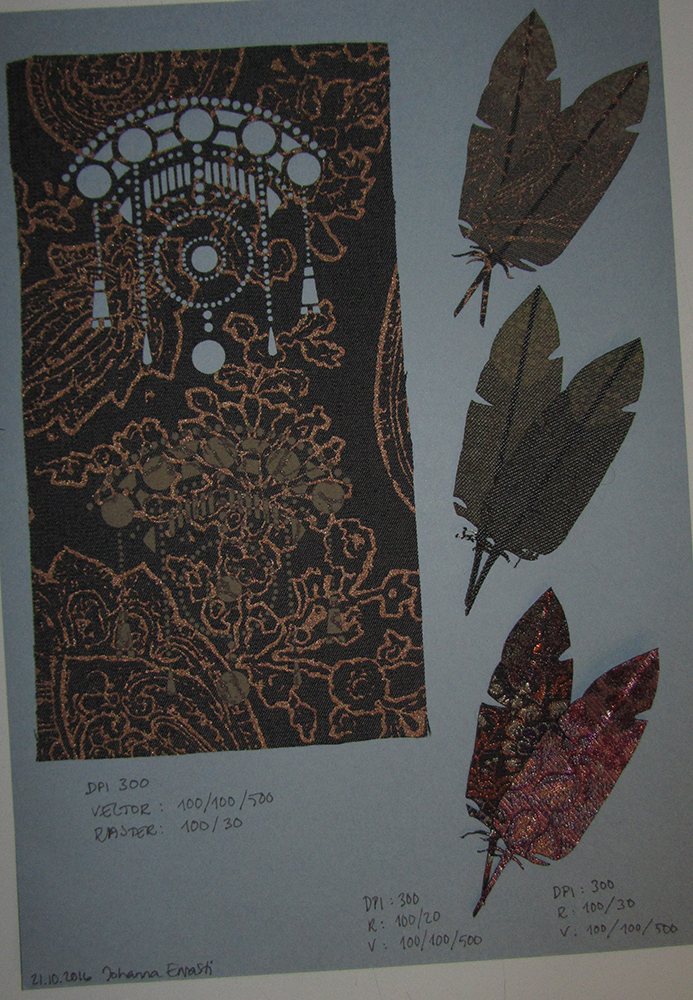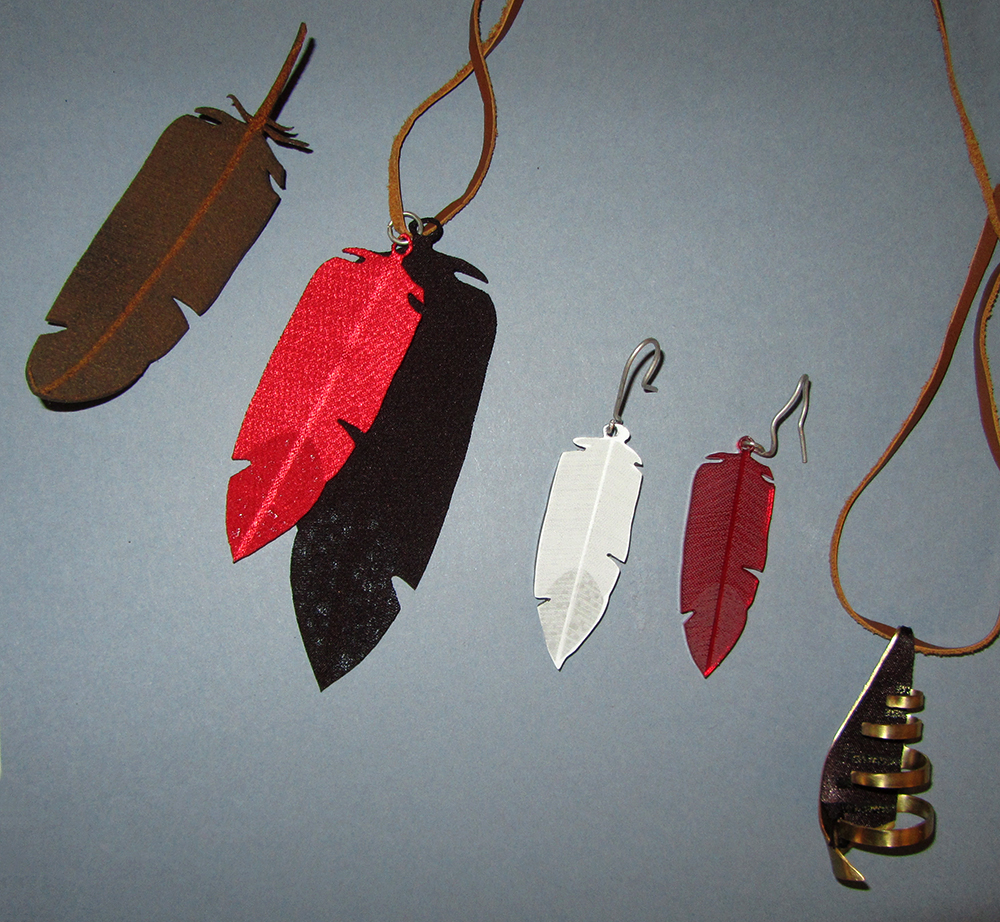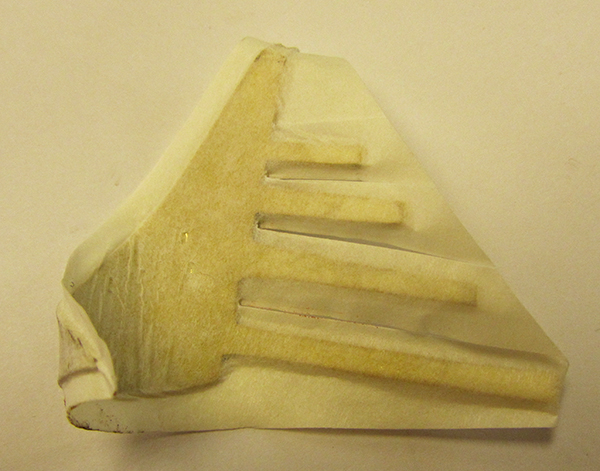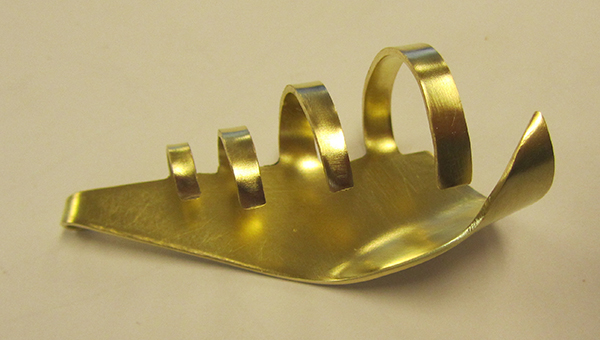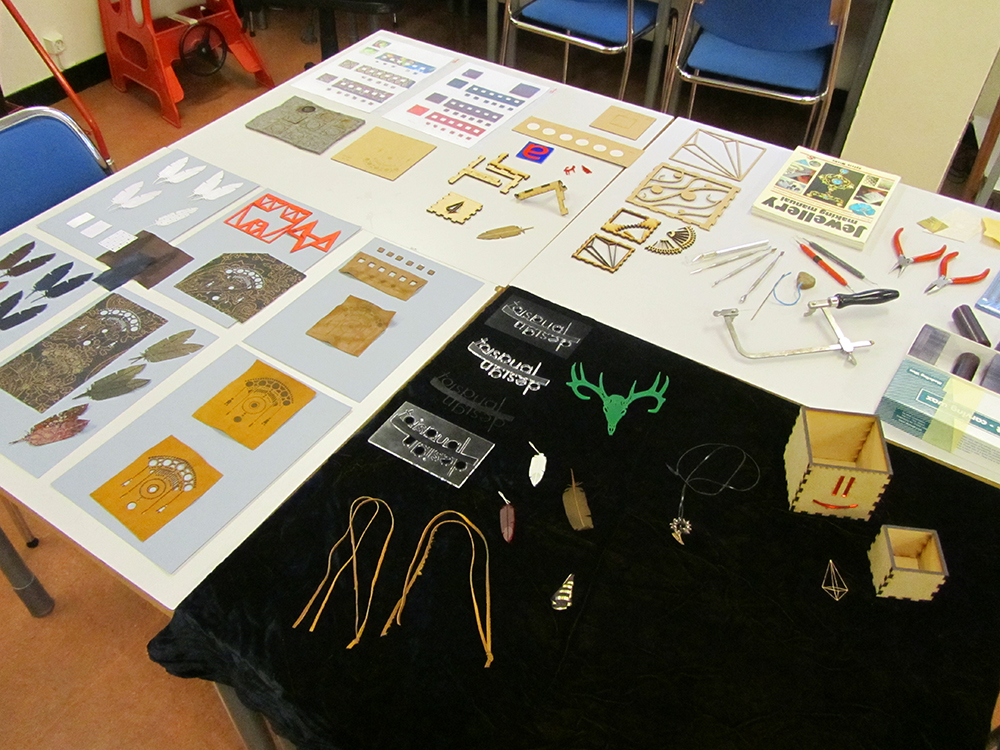Textile and Metal
In October the Finnish interns from Fab Lab Reykjavik visited Fab Lab Ísafjörður, and at the end of the visit we held a Textile and Metal theme day at the Lab. For this project we worked together with Johanna exploring possibilities to use laser cutter and digital technologies together with more traditional handicrafts techniques, and also in combining metal and textile together.
We also prepared to talk with visitors on what we have been doing at Fab Lab, and different aspects pertaining the above subjects. We started out with some sample test cuts of different textile material we had gotten from the local tailoring shop and from our visit to the Flag Factory.
After a bit of planning we decided to work on a feather pattern created in Inkscape.
We did some more exploration on perfect cut settings on different fabrics. On leather the pattern looked pretty great, but the smell from burning leather is really not pleasant. I am happy to report though, that after 3 weeks the smell has pretty much disappeared from the leather! Cutting wool also gives off major stench.
After testing we worked on some sample prototype products. Since both of us are interested in jewelry we decided on this theme for our samples.
From left to right on above picture: Example of laser cut and rasterised leather. Necklace made of two different fabric materials, cut and rasterised. Two earrings, white one from plastic/aluminium plate we got from the Flag Factory, red one from 3mm plexiglass. Also on display what happens when you leave your pieces unattended when an elementary school class is visiting. Brass/textile necklace.
Unfortunately you would need a way more powerful laser cutter to be able to cut through metal, but I did get to use laser cutter as an aid in the process of making the metal part of the necklace in any case. Normally I would draw or print the pattern I want on a piece of paper, and glue that on top of the metal before getting to the hand-sawing. From Þórarinn's suggestion I attached some backing sticky paper on the metal, and then cut the pattern I wanted with the laser cutter so I got the assist lines that way. Worked well! Afterwards I filed and sanded the piece, protected the piece again with the sticky paper for bending, and finally we cut a similar pattern on fabric. The rasterised parts of the fabric had the metal shining through nicely and we were rather satisfied with the result.
Here's a couple of pictures of the process:
On the day of the event we prepared a small display area for our samples and products.
And we also had some visitors to come and talk with us!
From left to right: Johanna, Viviana, Sonja and Þórarinn.

